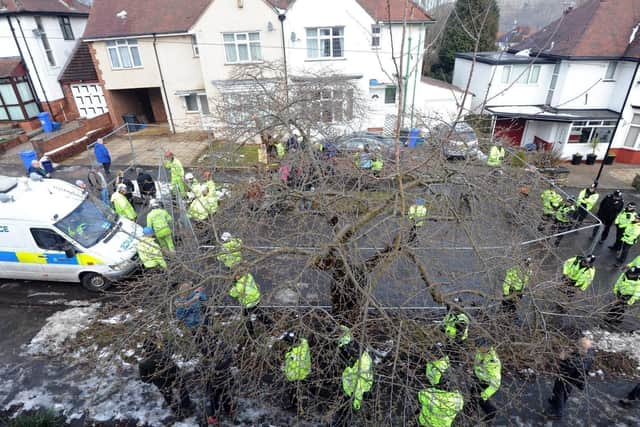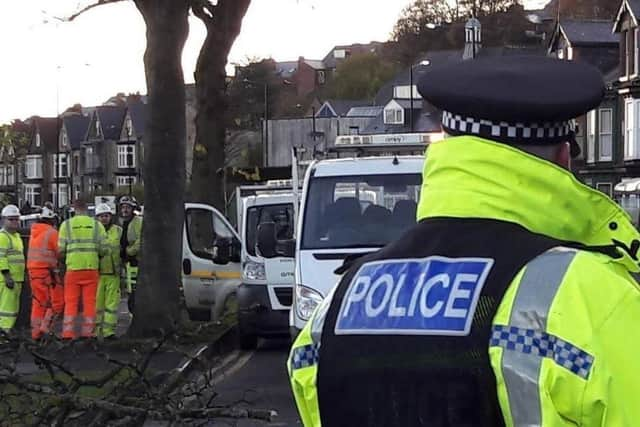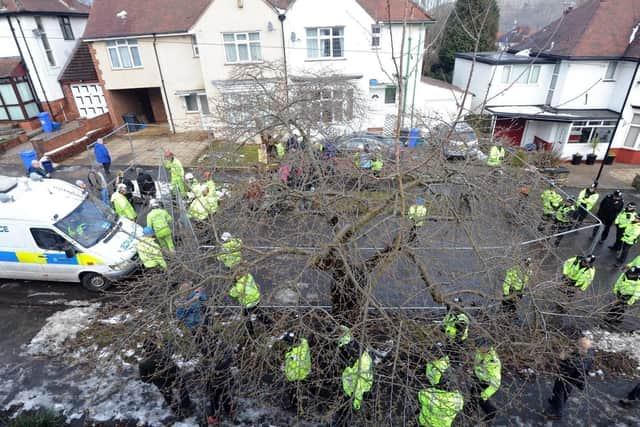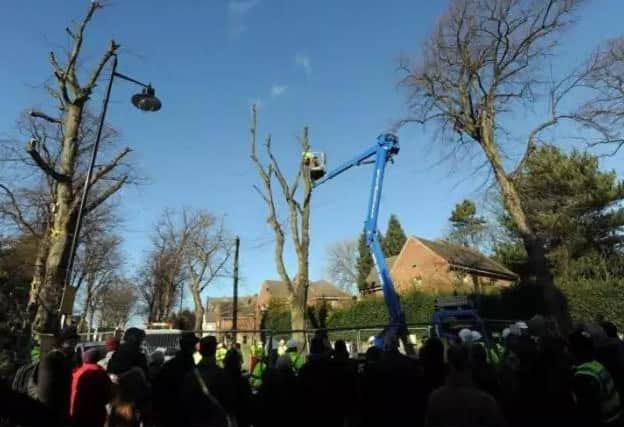Council and campaigners reveal new strategy to protect Sheffield's street trees following felling controversy
and live on Freeview channel 276
It follows nine months of work between Sheffield Tree Action Groups – STAG, Sheffield Council, Amey, experts from Natural Capital Solutions, Leeds Council and the Woodland Trust.
Paul Selby, from STAG, said: “Assuming the strategy is adopted and implemented by the council, residents can be confident their street trees will be protected, sustained, and increased in number.”
Advertisement
Hide AdAdvertisement
Hide AdCollaboration on the plans started after years of rows between STAG, the council and Amey over the £2.2 billion highways management contract called Streets Ahead.


During that time 5,400 trees were felled - about 600 of which the Forestry Commission said were chopped illegally. There were also mass protests, arrests and court cases.
A pause in felling, mediated talks and meetings have allowed them to finally agree a way forward.
Coun Mark Jones, council cabinet member for environment and streetscene, admitted the authority made wrong decisions in the past, but was now looking to lead on the issue.
Advertisement
Hide AdAdvertisement
Hide AdHe said: “Trees matter. Not only do they help improve air quality and support wildlife, but they have also been proven to benefit our mental health.


“We need better and more robust measures in place to make sure trees across Sheffield continue providing value to our natural and urban environment.
“We’ve not always got the approach to street trees right. However, through the hard work and dedication of the development group and others we have created this new strategy, one which ensures we listen carefully to all viewpoints and will shape how we do things better.”
Plans focus around six key goals: Sustainably and carefully manage street trees in accordance with best practice; Ensure street trees are more resilient through the type and age of trees we plant and how we manage current stock; Increase the value and benefits of street trees; Contribute to a more equal distribution of urban forest across the city to promote health and wellbeing; Increase street tree canopy cover; and Involve the wider community in caring for an valuing street trees.
Advertisement
Hide AdAdvertisement
Hide AdConsultation on the strategy will begin soon and run until spring 2021, while the group will also seek commitment to the strategy from other stakeholders during this time.


After that is completed, a finalised plan will be produced and implemented.
Part of the work included commissioning Treeconomics to report on the benefits of Sheffield's 35,629 street trees.
It found the current value of street tree benefits in the city was £7.7 million over 80 years and the public amenity value over the same time period was £340m.
Advertisement
Hide AdAdvertisement
Hide AdIt also found the street trees remove three tonnes of air pollutants every year and store 12,000 tonnes of carbon, according to Treeconomics.


Sheffield has a 'relatively high' diversity of street tree species, with 187 identified but the majority were rated 'fair', meaning they were not either outstandingly good or particularly poor specimens in terms of benefits.
Two thirds of the tree stock are currently still maturing.
Going forwards, each tree will be assessed by a six stage process and any street tree that needs to be replaced because it is either dead, dying, diseased, damaged or dangerous will be replaced on a one-for-one basis close to the original site.